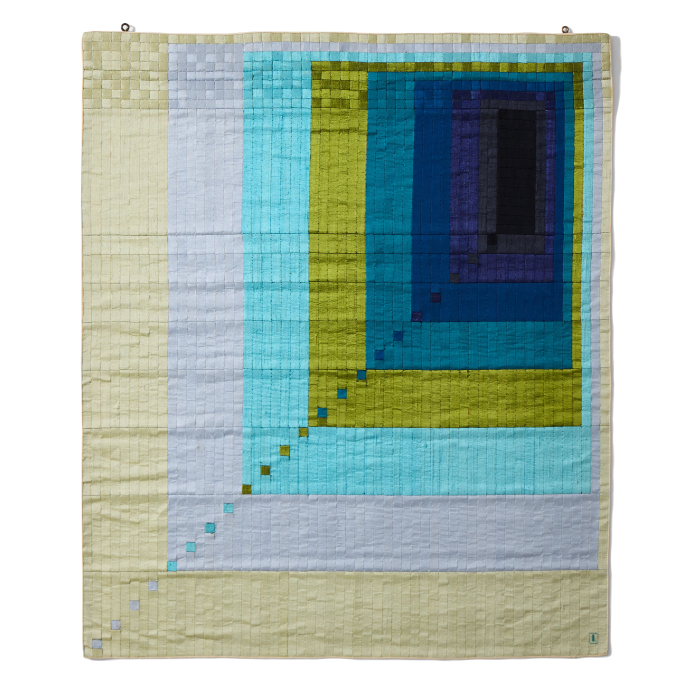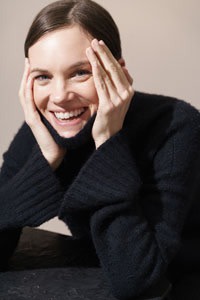Margaret Howell gives Lucienne Day new lustre

Unlock the Editor’s Digest for free
Roula Khalaf, Editor of the FT, selects her favourite stories in this weekly newsletter.
“People think Lucienne Day, and they think Calyx,” says Paula Day of her late mother, the revered British designer. In the 1950s, Lucienne shook up the world of textiles with her bold, Modernist prints. Calyx, an abstracted floral, was created for the Festival of Britain in 1951 — a national exhibition to celebrate British industry that also featured the forward-looking furniture of Lucienne’s husband, Robin.
But Lucienne produced many other influential creations, some which are now the subject of an exhibition at fashion designer Margaret Howell’s London store. The designer is also using these artworks to illustrate her 2025 calendar (£15).
“Lucienne Day was pioneering in what was then a seemingly monochromatic postwar Britain,” says Howell. It’s not printed fabrics that Howell is showing, however. Nor will she feature Lucienne’s wallpaper designs for Cole & Son; nor her tableware with German manufacturer Rosenthal. Instead she’s homing in on the “silk mosaics” Lucienne started creating when she was in her 60s. “By then, I think she’d had quite enough of designing collections to deadlines every year,” says Paula. “It’s when most people retire but, being my mother . . . She began to experiment.”


The graphic, often architecture-inspired “mosaics” were plotted on graph paper, then translated into shimmering Thai or Indian silk wall-hangings in a similar way to patchwork, but in exacting 1cm squares. The results are striking and lustrous. “Lucienne’s idea of using coloured silks to create an abstract image was an inspired new form of tapestry, or even painting,” says Howell.
From the 1970s to the 1990s, Lucienne made more than 200 of these one-off artworks. They range from very small pieces for domestic spaces, to huge ones — the biggest being “Aspects of the Sun” (1990), created for the John Lewis Kingston coffee shop. The monumental installation, which remains in the store today, measures almost three metres by five metres.
The Howell exhibition and calendar feature large-scale pieces, such as “The Castle and Other Stories” (1979), a patchwork of multiple patterns, in deep rich shades of aubergine, fuchsia and gold — a work that long hung in the Days’ Chelsea home in Cheyne Walk.

Being shown for the first time is a quilt made in 1954, incorporating Lucienne ’s own dress fabrics and some of her own designs. “It’s fantastic: incredibly vivid and contemporary,” says Paula. “It was on my parents’ bed, I’ve had it in a cupboard for years and only recently realised it’s really historically interesting.”
In 2012, Paula set up the Robin and Lucienne Day Foundation to honour and protect her parents’ legacy. As well as donating the contents of their home to public collections (including London’s Victoria and Albert Museum and Museum of the Home), the charity has “been fighting endless legal battles” over copies of their designs, she says.
Lucienne is not the only Day having a moment. Robin’s furniture designs have recently been celebrated by Copenhagen-based brand &Tradition, with an exhibition at its London showroom and a number of relaunches. Creative and brand director Els Van Hoorebeeck refers to Robin’s designs as “timeless” and “iconic”.


The reissues both date back to 1951. The first is the Royal Festival Hall Collection, commissioned for London’s South Bank concert hall; while his auditorium seating remains in use today, the chairs and tables that once graced the foyer and terrace are now available to buy, some for the first time. The second collection is Daystak (originally called Hillestak and produced by British furniture company Hille): a desk, table and chair that exemplify Robin’s minimalist, mid-century aesthetic.
“We wanted to take my father’s designs out to the world because his name has not been very well known up till now,” says Paula. “It’s the perfect way to tell the story of how his career started.” Lucienne is very much a part of this story, and the &Tradition display also features Lucienne’s textile designs. It’s a fitting tribute to the couple whose distinct Modernist standpoints developed side by side, and whose work, adds Paula, “is part of the nation’s cultural heritage”.
Lucienne Day Silk Mosaics 1972-1993 is at Margaret Howell, 34 Wigmore Street, London W1 until November 3 (margarethowell.co.uk)
Find out about our latest stories first — follow @ft_houseandhome on Instagram
#Margaret #Howell #Lucienne #Day #lustre





